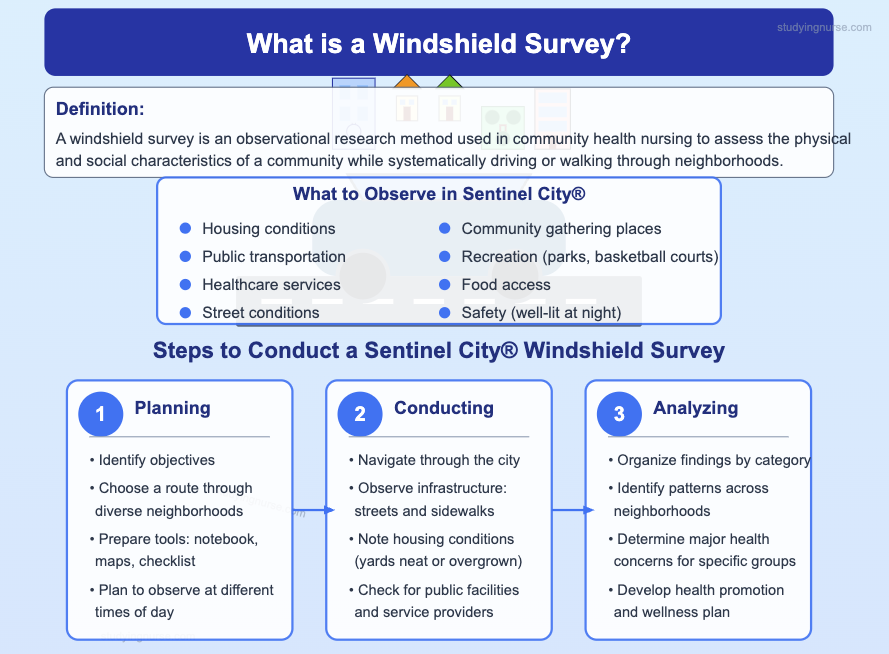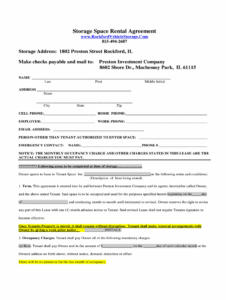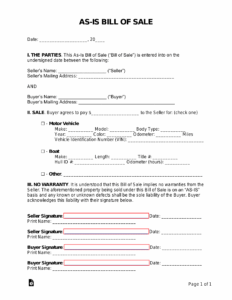Embarking on a community health assessment can often feel like piecing together a complex puzzle. You need to understand the visible characteristics, social dynamics, and environmental factors that influence a population’s well-being. This is precisely where a windshield survey comes into play, offering a unique, on-the-ground perspective by observing a community from a vehicle or while walking through designated areas. It’s a foundational step for public health professionals to gather preliminary data and identify critical areas for further investigation or intervention.

Think of it as taking the pulse of a neighborhood without direct interaction, allowing you to quickly gain insights into its physical structure, social activity, and the overall health of its inhabitants. While the concept is straightforward, having a structured approach ensures consistency and thoroughness. That’s why developing and utilizing a comprehensive windshield survey template for public health is incredibly beneficial, guiding observers to focus on key indicators and document observations systematically. This article will walk you through the essential elements and practical applications of such a template, empowering you to conduct more effective community assessments.
Understanding the Core of a Windshield Survey
A windshield survey is a rapid method of data collection that involves driving or walking through a community and systematically observing its various elements. For public health, its primary purpose is to provide a broad overview of a community’s health status and potential risk factors. It’s about seeing the environment through the lens of health, noting everything from housing conditions and available services to observable behaviors and environmental hazards. This initial assessment helps public health practitioners identify community strengths, weaknesses, and areas needing immediate attention, serving as a springboard for more in-depth research or program development.
The beauty of this method lies in its efficiency and ability to offer a real-world snapshot. Unlike relying solely on quantitative data, a windshield survey captures the nuances and qualitative aspects of a community that might otherwise be missed. It helps to validate existing data, identify gaps in information, and develop a more holistic understanding of the social determinants of health at play within a specific geographic area. For instance, observing the presence of many fast-food restaurants but few grocery stores might highlight food desert issues, while dilapidated housing could signal socioeconomic struggles and potential health hazards.
Key Elements to Observe During Your Survey
To ensure your windshield survey is comprehensive and useful, it’s crucial to know what specific elements to look for. These observations form the bedrock of your community assessment. Your template should guide you to systematically record details about the physical environment, social structures, and visible health indicators. This structured approach prevents crucial details from being overlooked and ensures that all relevant aspects of the community are considered, laying a strong foundation for any public health intervention.
When conducting your survey, pay close attention to the following categories. Think of them as the chapters in your community’s story, each revealing important insights into its overall health and well-being:
- **Housing and Zoning:** Note the condition of homes, types of housing (single-family, apartments), signs of abandonment, and overall neighborhood upkeep. Are there areas of new construction versus decay?
- **Open Spaces and Recreation:** Observe parks, green areas, playgrounds, and their condition. Are they accessible and safe? What recreational activities appear to be available or lacking?
- **Transportation:** Assess the availability and condition of public transport, pedestrian walkways, bike lanes, and general traffic flow. How easy is it for residents to move around?
- **Commercial and Industrial Areas:** Identify types of businesses, the presence of industries, and potential environmental impacts. Are there essential services like pharmacies and clinics readily available?
- **Community Services and Resources:** Look for schools, churches, community centers, healthcare facilities, and social service agencies. Do they appear active and well-utilized?
- **Safety and Disorder:** Note signs of crime (graffiti, broken windows), presence of security measures, and general perceptions of safety. Are public spaces well-lit?
- **People and Lifestyles:** Observe the demographics (age, apparent ethnicity), social interactions, visible health issues (e.g., people using mobility aids), and general community activity.
Each observation, no matter how small, contributes to a larger narrative about the community’s health landscape. These qualitative insights are invaluable for pinpointing specific needs and tailoring public health initiatives effectively.
Crafting Your Effective Windshield Survey Template
Developing a standardized windshield survey template for public health is essential for consistency and comparability, especially when multiple observers or surveys are conducted over time. A well-designed template provides a structured framework, guiding the observer through a systematic assessment and ensuring that all critical data points are considered and documented. It transforms a simple drive-through into a rigorous data collection exercise, making the insights gathered more reliable and actionable.
A robust template should begin with basic administrative information: the date and time of the survey, the name(s) of the observer(s), the specific route taken (with starting and ending points), and weather conditions, which can influence observations. Following this, the template should be divided into distinct sections mirroring the key observation categories discussed previously. Each section should have ample space for detailed notes, allowing for both quantitative counts (e.g., number of vacant lots) and qualitative descriptions (e.g., “graffiti present on most street corners, suggesting gang activity”).
Crucially, the template should incorporate open-ended sections for general observations, surprises, or areas that don’t fit neatly into predefined categories. This flexibility allows observers to capture unexpected findings or unique characteristics of a community that might reveal important health determinants. For example, an observer might note a vibrant community garden in an otherwise blighted area, indicating a strong community spirit and potential for health promotion through gardening initiatives.
Once the observations are recorded using your windshield survey template for public health, the real work of analysis begins. The template serves as a raw data source that can be aggregated, summarized, and compared across different areas or time periods. These insights then inform community health needs assessments, help identify priorities for interventions, and provide a baseline for evaluating the impact of public health programs. It’s a practical tool that bridges the gap between raw observation and strategic planning, empowering public health professionals to make data-driven decisions that genuinely improve community well-being.
Utilizing a structured approach like a windshield survey template is not just about collecting information; it’s about gaining a deeper appreciation for the nuanced realities of community life. This method allows public health professionals to move beyond statistics and truly understand the environment in which people live, work, and play. By systematically observing and documenting, we can better identify the hidden challenges and overlooked strengths within neighborhoods, paving the way for more targeted and effective health interventions.
Ultimately, the insights gleaned from these surveys empower communities and public health organizations to collaborate on solutions that are truly responsive to local needs. By understanding the visible aspects of community health, from the availability of fresh food to the safety of public spaces, we can build healthier, more resilient communities for everyone. Embrace this powerful observational tool to make a tangible difference in public health.


